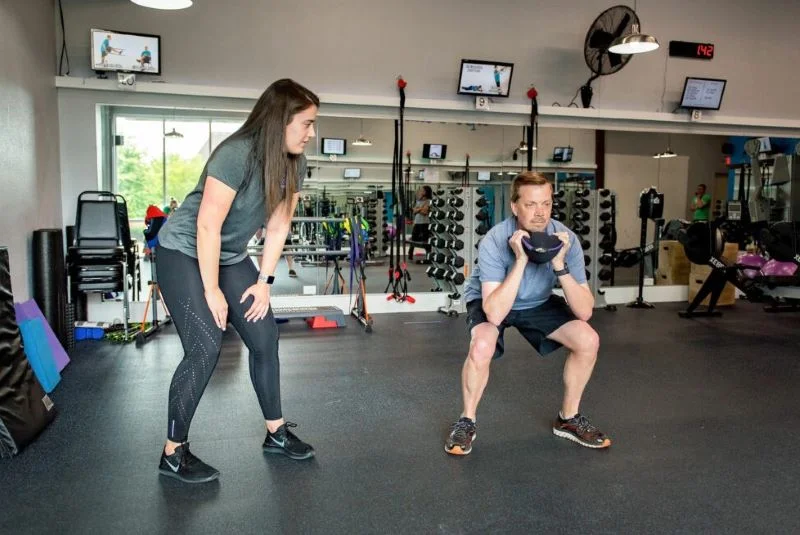Mastering German Horseshoe Exercises for Strength and Resilience
German horseshoe exercises combine traditional strength training with an incredibly entertaining challenge, giving fitness a distinctive twist. To strengthen your arms, shoulders, and core, bend and move a U-shaped steel bar, sometimes known as a horseshoe.
With a contemporary twist, it seems a throwback to the era of traditional strongmen. These workouts push you to new strength levels and give you a sense of power. They also demand mental and muscular focus. Are you prepared to put your grit to the test?
1. The Origins and Purpose of German Horseshoe Exercises

With their origins in military fitness customs, German horseshoe exercises provide a distinctive method of strength training. This demanding workout regimen was created to improve troops’ mental and physical stamina, demonstrating the need for functional strength. With a special emphasis on the upper body, core, and grip strength, these workouts promote a balanced body. The horseshoe requires coordination, stability, and mental focus, in contrast to regular lifting, which frequently isolates muscles.
The German horseshoe is used nowadays by athletes, fitness enthusiasts, and even rehabilitation professionals because of its comprehensive conditioning. What makes it unique is how easy it is to set up, using little equipment but still offering a vigorous workout. These exercises’ efficiency and accessibility have contributed to their continued popularity and relevance in a variety of fitness fields. It is a flexible training approach that can be used by both novices developing fundamental strength and specialists honing their endurance.
The workout is a difficult sequence that requires focus on form, breathing, and rhythm; it’s not just a drill. In addition to increasing strength, each repetition necessitates a careful approach to improve stability and avoid damage. When performed correctly, these workouts provide a noticeable increase in functional strength and muscular definition. The German horseshoe may be a useful tool for long-term fitness gains with perseverance and repetition.
2. Key Muscle Groups Targeted by the German Horseshoe
The upper body, which includes the shoulders, arms, chest, and core, is the main goal of German horseshoe exercises. The deltoids, triceps, and biceps are heavily emphasized by the dynamic, rotational movements needed, which forces them to cooperate. Building balanced, functional muscle without the mass typically associated with traditional weight training is made possible by this exercise-specific coordination.
The exercise also requires a high level of core engagement, as each movement is stabilized by the obliques and lower abdominals. In contrast to leg raises or crunches, this exercise calls for the core to function as a stabilizer rather than a prime mover. This difference promotes the development of a deeper, more useful strength that supports posture, balance, and injury resistance. Athletes are consequently more nimble and better prepared for a range of athletic activities.
Because holding the weighted horseshoe for prolonged periods of time tests both wrist stability and forearm endurance, grip strength is also a major focus. German horseshoe exercises are excellent at encouraging a firmer, more durable grip, yet the significance of grip strength is frequently undervalued in conventional workouts. This is a very helpful workout for people who play sports or pursue other hobbies that require strong, continuous hand strength.
3. Technique and Form Essentials for Maximum Effectiveness

The foundation of every successful German horseshoe workout is proper form. Even slight variations in technique might result in inefficiency or even injury because the goal of this exercise is rotational strength and stability. In order to accept the movement’s flow without putting undue strain on the wrists, begin by maintaining a firm yet flexible grasp. The regulated movement necessary to develop stability and power is made possible by a firm grasp and a grounded stance.
Another essential element is core stability, which is required to maintain the body’s balance and stability. By contracting your abdominal muscles, shielding your lower back, and assisting in keeping your posture straight during each rotation, you can activate your core. Fluid motions are preferred over jerky or hurried ones, with a focus on controlled rotation. Each muscle group can be fully engaged with smooth, continuous motion, increasing the effectiveness of the training.
Breath control, which maintains the workout’s rhythm, is equally crucial. Breathe in as you prepare and out as you exert yourself, coordinating your breathing with each stage of the activity. This method maintains the intensity required for a good session by improving endurance and assisting in heart rate regulation. Proper breathing keeps you in control from beginning to end and increases the effectiveness of your training by reducing weariness.
4. Common Mistakes and How to Avoid Them
Excessive grip is a common mistake made when performing German horseshoe exercises, which puts undue strain on the arms and wrists. Squeezing the horseshoe too firmly is a common mistake made by beginners that restricts the exercise’s flow. Instead, strive for a firm yet relaxed grip to ease tension and enable smoother movements. Natural rotation is encouraged by a balanced grip, which permits effective, controlled action without compromising stability.
Poor posture, especially slouching or leaning too far forward, is another typical mistake. This inclination can be avoided by keeping an upright posture, shoulders relaxed, and core engaged. In addition to reducing the exercise’s advantages, bad posture raises the possibility of injury. especially to the shoulders and lower back. Correct posture can be assisted by visual cues, such as doing the exercise in front of a mirror, until it becomes instinctive.
Last but not least, rushing through the exercise frequently reduces its effectiveness. Building regulated, functional strength is the goal of the German horseshoe, which calls for a methodical, conscious tempo. Form is sacrificed when repetitions are rushed, which reduces the exercise’s effectiveness and raises the danger of strain. Prioritize the quality of each spin over its quantity, and only increase pace gradually once you have mastered the technique.
5. Integrating German Horseshoe Exercises into Your Routine
Whether employed as a stand-alone exercise or in a circuit, the German horseshoe can improve strength and stability when incorporated into a workout regimen. Starting with few repetitions is a smart strategy since it gives your body time to adjust to the particular demands of the exercise. Prioritize quality over quantity and begin with two to three sets of eight to ten repetitions. As strength and comfort improve, progressively increase the number.
The advantages can be increased by combining horseshoe exercises with supplementary workouts like pull-ups, dips, or core stability exercises. Combining compound movements with the German horseshoe allows you to create a well-rounded workout that strengthens several muscle groups and promotes functional fitness. This diversity increases long-term growth by preventing burnout and maintaining a dynamic and interesting habit.
The German horseshoe exercise is perfect for warmups and cooldowns due to its adaptability. It primes the upper body, engages core stabilizers, and strengthens the mind-muscle link as a warm-up. It helps to stretch and cool down the muscles during a cooldown, which improves recovery and lessens pain after an exercise. The German horseshoe’s versatility and special advantages make it a useful addition to any comprehensive exercise program.







